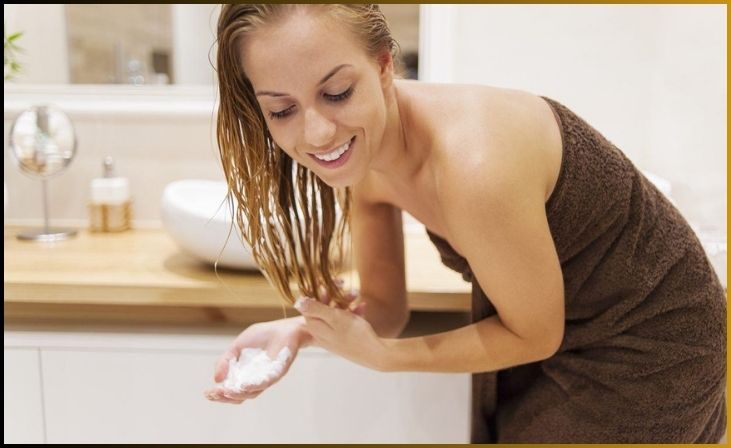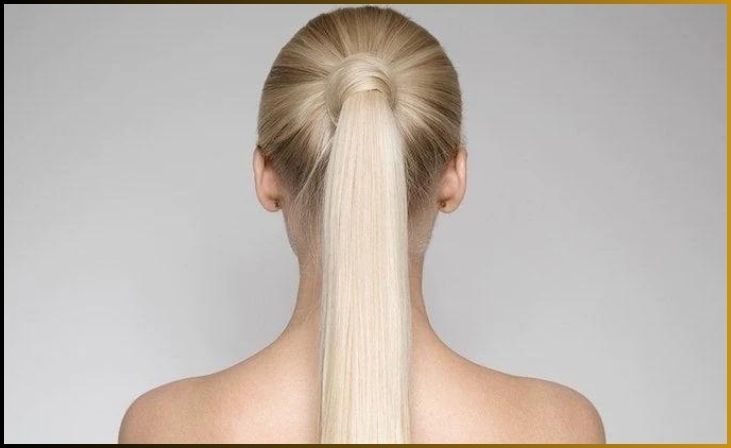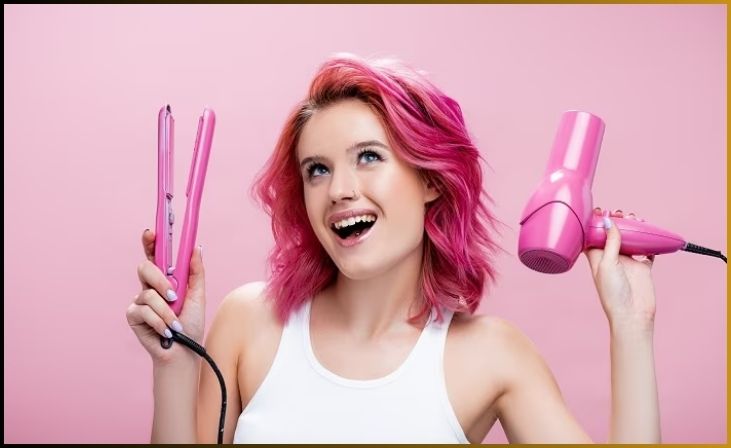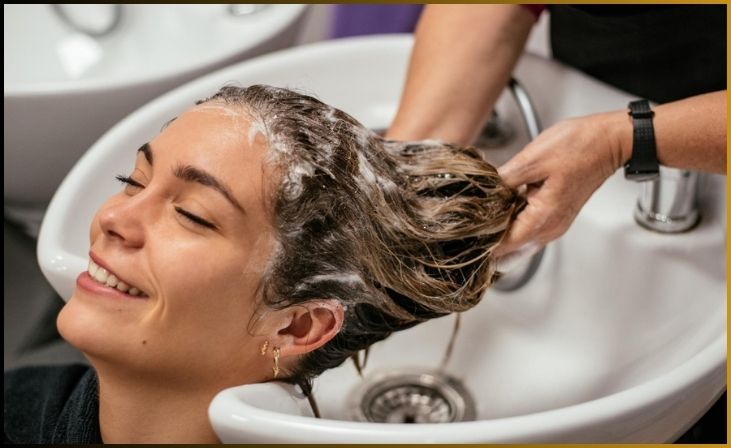Are your tresses in need of some serious tender loving care? Damaged hair can be a real confidence killer, but the good news is that with the right strategies, you can restore your locks to their former glory. Having luscious and healthy hair is a dream for many, but exposure to various environmental factors and haircare habits can leave your locks damaged and lifeless. Fortunately, there are several effective tips to repair your damaged hair and restore its natural beauty.
We’ve compiled a comprehensive guide with eight pro tips to repair your damaged hair fast. Whether your hair is suffering from excessive heat styling, chemical treatments, or just the wear and tear of everyday life, these expert suggestions will make your hair look and feel fabulous in no time.
How does Hair get damaged?
Damaged hair strands can be caused by a number of things, and most of the time they are caused by more than one thing. These are three of the most common things that hurt hair.
Bleaching
When you lighten your hair by more than three shades, it requires higher volumes of peroxide or bleach, which can result in increased hair damage. Bleach draws moisture from the hair, leading to dryness, and frequent bleaching can lead to more severe issues like breakage and split ends.
Heat Styling
Hot tools, while great for achieving trendy styles like a voluminous blowout, can be harsh on your hair, particularly when used frequently. Often, these tools reach temperatures higher than what we use for cooking, which can potentially damage your hair. If you choose to use them, do so in moderation and follow healthy hair practices, such as using a heat protectant and selecting the lowest temperature setting.
Hair Color
Permanent hair color can also contribute to dryness in your strands, resulting in damage like brittle hair and dehydration. To mitigate this, it’s advisable to allow your hair time to recover between hair coloring sessions, typically around six to eight weeks. Additionally, it’s recommended to opt for a darker shade than your current color as it avoids the use of bleach, which can be less damaging to your hair.
Quick Link: Vitamin E Oil for Hair: 6 Ways to Get Luscious, Healthy Locks
Effective Tips to Repair Your Damaged Hair Fast
If you have dry, brittle hair, and split ends because of heat damage, hair color, or dying your hair all the time, you need to learn some tips to repair your damaged hair with the right hair care routine. Below, we’ll explore eight pro tips to help you revive your hair quickly.
1. Trim Regularly

Initiating the journey towards repairing damaged hair often begins with a simple yet vital step – getting a trim. Regular trims serve as a preventive measure by eliminating split ends, halting their progression up the hair shaft, and averting further damage. The result is not only a healthier and more vibrant appearance for your hair but also the stimulation of improved growth.
Recognizing the significance of trimming your hair is crucial in the path to hair recovery. It’s an essential practice that should be embraced, especially if you’re seeking to restore your hair’s vitality and strength.
As for the frequency of trims, it varies from person to person and depends on your hair’s condition. Typically, getting a trim every 6-8 weeks is a good starting point, but consulting with your stylist can help you determine a personalized schedule that suits your specific hair needs. By prioritizing regular trims, you take a significant step towards achieving healthier and more beautiful hair.
2. Use a Gentle Shampoo

When it comes to maintaining the well-being of your hair, investing in a high-quality conditioner is a non-negotiable step, forming an integral part of your post-shampoo routine. Conditioners act as moisture guardians, effectively locking in the hydration your hair craves, resulting in improved overall health and a more visually pleasing appearance. If your hair is in need of extra care, leave-in conditioners step in as superheroes, providing an additional layer of moisture and protective shielding.
Selecting the perfect conditioner is not a one-size-fits-all affair; it depends on several factors, including your hair type, specific requirements, and any concerns you may want to address. These factors guide you toward a conditioner that perfectly matches your hair’s unique needs.
3. Condition Regularly

Prioritizing the well-being of your hair calls for an investment in a top-tier conditioner, which should be a regular post-shampoo ritual. Conditioners play a pivotal role in sealing in moisture, thereby enhancing your hair’s overall health and aesthetic appeal. For those with damaged hair, leave-in conditioners offer an additional layer of moisture and protection.
Selecting the ideal conditioner hinges on various factors, such as your hair type, specific needs, and any concerns you may have. These factors guide you toward a conditioner that aligns perfectly with your hair’s requirements.
The advantages of leave-in conditioners extend beyond their hydrating properties, as they contribute to detangling, protection from external factors, and long-lasting moisture. Whether applied post-shampoo or as a leave-in solution, the right conditioner is a key player in maintaining your hair’s radiance and resilience.
4. Avoid Tight Hairstyles

Maximizing the advantages of a deep conditioner involves mastering the precise application technique. It commences with generously applying the product to your clean, damp hair, ensuring thorough coverage. The next step involves granting the deep conditioner time to perform its magic, typically within a 5 to 30-minute window, adhering to the specific product’s recommendations. During this interval, the conditioner works its way deep into your hair, reinforcing it from within and revitalizing its overall health.
The selection of the ideal deep conditioning product is a pivotal aspect of this process. The market offers a diverse range of options, encompassing nourishing masks, revitalizing serums, and more. To make the most informed choice, it’s essential to assess your unique hair type, pinpoint the specific hair concerns you intend to tackle, and carefully examine the ingredients present in the product.
5. Limit Heat Styling

Unlocking the full benefits of a deep conditioner involves mastering the proper application technique, a straightforward process that begins with generously applying the product to your clean, damp hair. After application, allow the deep conditioner to work its magic, typically within a timeframe of 5 to 30 minutes, depending on the specific product’s instructions. During this period, the conditioner delves deep into your hair, fortifying it from within, and replenishing its vitality.
Selecting the perfect deep conditioning product is paramount to this process. The market offers a wide array of choices, from nourishing masks to revitalizing serums. To make the optimal selection, it’s crucial to consider your unique hair type, the specific concerns you aim to address, and the ingredients found in the product.
Also Read: 12 Trendiest Blunt Cut Bob Ideas For Every Women
6. Deep Conditioning

To unlock the benefits of a deep conditioner, you must know the proper application technique. It’s a straightforward process involving the generous application of the product to your clean, damp hair. After the application, allow the deep conditioner to work its magic, often for around 5 to 30 minutes, depending on the product’s instructions. During this period, the conditioner penetrates your hair, fortifying it from within.
When it comes to selecting the ideal deep conditioning product, it’s essential to choose one that aligns with your hair’s unique needs. There’s a wide array of deep conditioning products available, from nourishing masks to revitalizing serums. To make the right choice, consider factors such as your hair type, the specific concerns you wish to address, and the product’s ingredients.
By embracing the practice of deep conditioning, you embark on a journey to rejuvenate your hair, providing it with the care and nourishment it deserves. The result is hair that exudes vibrancy, strength, and resilience, a true testament to your commitment to maintaining its health and allure.
7. Balanced Diet

The importance of your dietary choices on the health of your hair cannot be overstated. Your hair’s well-being is closely linked to the nutrients you consume. To facilitate the repair and revitalization of your hair, it’s vital to adopt a balanced diet teeming with an array of vitamins, minerals, and protein. These essential nutrients play a pivotal role in fortifying your hair, ensuring it remains robust and visually appealing.
Certain key nutrients are particularly noteworthy for their contributions to hair health. To optimize your diet for hair repair, consider incorporating foods that are abundant in these elements. Whether it’s the protein that strengthens your hair’s structure or the vitamins and minerals that nurture its growth and vitality, your diet serves as a fundamental determinant of the health and beauty of your hair.
By making conscious food choices and embracing a nutrient-rich diet, you embark on a journey to not only repair your hair but also sustain its strength and allure. In doing so, you empower yourself with the means to nurture your hair from the inside out, resulting in a radiant and resilient mane that speaks to your overall well-being.
8. Always Use Heat Protectant

Prior to embarking on your hairstyling journey, whether it’s crafting those voluminous curls or achieving a sleek blowout, it is paramount to initiate the process by applying a high-quality heat protectant to your hair. This preliminary step holds great importance for all hair types but becomes particularly essential if your hair exhibits any signs of existing damage. For optimal results, consider using products like the L Weightless Blow Dry Primer, and Heat Protectant, which serve the dual purpose of smoothing and safeguarding your damp hair from the rigors of heat styling.
Alternatively, the Serum Leave-In can be your go-to choice to combat frizz and provide a protective shield for your already dry hair, ensuring a polished and damage-free outcome. By prioritizing the application of heat protectants, you lay a strong foundation for the health and resilience of your hair, making your desired hairstyle not just visually stunning but also safe from potential harm.
Final Thoughts
Say goodbye to lifeless, damaged hair and hello to lustrous, healthy locks! Repairing damaged hair can be a journey, but with these pro tips, you’ll be well on your way to achieving the hair of your dreams. Remember to be patient and consistent in your efforts, and don’t forget to give your hair the love and care it deserves. Your hair will thank you with its newfound shine, strength, and vitality.
FAQs
Damaged hair often exhibits signs like split ends, excessive frizz, dryness, and a lackluster appearance. If your hair feels brittle and lacks its usual shine, it might be damaged.
While it can be challenging to reverse extreme damage, following a diligent hair care routine and using the right products can significantly improve the condition of your hair.
Trimming your hair every 6-8 weeks can help remove split ends and prevent further damage, allowing your hair to grow healthier.
Yes, maintaining a balanced diet rich in nutrients like vitamins A, C, and E, as well as biotin and protein, can support hair health and repair damaged strands.

